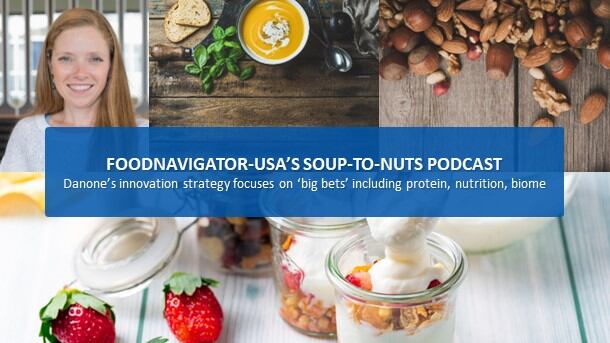Cargill’s proprietary TrendTracker data, which combines custom research conducted by the ingredient supplier with data from trusted partners, shows consumers are less willing to compromise when selecting food and beverages – they want products that support their health and that of the planet, fit within their budgets and yet are simple to prepare and deliver delightful sensory experiences.
At IFT’s Annual Event & Expo in Chicago last month, Keith Albright, Cargill’s marketing insights and analytics manager for North America explained in this episode of FoodNavigator-USA’s Soup-To-Nuts podcast acknowledged that this wish list may not sound new – but as he explains how each of these trends is manifesting and the emotional and behavioral shifts they are triggering in consumers are noteworthy because they are moving the line. To help industry meet heightened expectations, Albright breaks down the evolution of four macro trends that Cargill is tracking: “Healthy for me,” “conscious consumption,” “experience it” and “simplify my life.”
[Editor’s note: Never miss an episode of FoodNavigator-USA’s Soup-To-Nuts podcast or our recently launched Founders’ Fundamentals podcast – subscribe today.]
Healthy for me: Demand for personalized nutrition complicates definition of healthy
When it comes to food and beverage “healthy” is “always going to be the number one” and “meatiest” trend that Albright says Cargill has followed in the ten years since it launched its TrendTracker data – in part, he said, because it is a moving target that is heavily influenced by other cultural factors and evolving nutrition science and research.
To better understand how consumers currently think about and define healthy and how that in turn influences their food and beverage decisions, Albright said Cargill breaks this macro-trend into four components, the first of which is “eating to live.”
He explained: “Eating to live is all about that personalized nutrition – what is right for me is not necessarily going to be right for you.”
Cargill data shows that one in five consumers say they are following their own personal diet, and many note that they evaluate whether a product fits their diet based on the claims, label, endorsements, ingredient deck or if it calls out something they want, Albright said.
Eating to live is also about healthy aging – which younger consumers will define differently than older ones, with the divide often falling along prevention versus reaction.
The second component of “healthy eating” is what Cargill calls “plants & beyond,” or exploring the health benefits and possibilities of plants via new technologies. Albright sees significant potential for protein, which consumers now understand can come from plants and as such are looking for it in unexpected places – such as in chocolate.
Another component of “healthy eating” is “mindful eating,” which Albright says centers on “natural” and ingredient avoidance.
Conscious consumption: Balancing value with values
The second macro-trend that Cargill is tracking is “conscious consumption,” which Albright says includes the complicated and sometimes contradictory challenge of balancing value with values.
“Under conscious consumption, the two areas that stick here are value-accelerated and sustainability extended,” said Albright. He defined the first in terms of the broader economy – warning that the current slump in the US will linger longer than previous recessions and be characterized by ups and downs. The second side of this trend will be heavily influenced by the first, he added.
He explained, in order to afford higher prices for products that meet their values consumers are pulling back on volume and, in some cases, trading out of certain categories in order to afford the products they want in other categories.
The idea of balancing spend across categories to afford products that meet consumers' ethical values complicates the competitive landscape because it may pit disparate products or brands against one another, but it also reveals a lack of willingness by consumers to compromise where it matters most to them.
Experience it: From recreating restaurant dishes at home to permissible indulgence
The latter point is also a fundamental factor in the third macro trend that Cargill’s TrendTracker revealed: Experience it.
“Experience it” is also about indulgence and eating food or drinking a beverage for sheer delight of doing so without feeling guilty or to experience something new – such as a cuisine or flavor combination.
Simplify my life: Convenience still matters
The last macro trend that Albright shared which Cargill is tracking is “Simplify my life,” which includes not only demand for convenience but also the role of technology in helping consumers discover foods and beverages and how they might fit into their lives on a daily basis.
He explained that many consumers still have limited time and skills to cook, but technology is helping to introduce them to new recipes and techniques that can save time and breakdown challenges in the kitchen.
Technology also is allowing consumers to blend home cooking with take-out, with many consumers ordering for delivery a component of their meal, which they complement with side dishes or other foods they are more confident cooking.
As the ongoing evolution of each of these trends suggests – meeting consumers' expectations can be challenging, but Albright says it is easier to do through partnerships and collaboration that go beyond the transactional, which is what he says Cargill hopes to be for food industry stakeholders navigating the current landscape.
With that in mind, listeners can learn more about the trends that Cargill is tracking and how Cargill could help meet them by visiting Cargill.com/trendtracker for more information.




